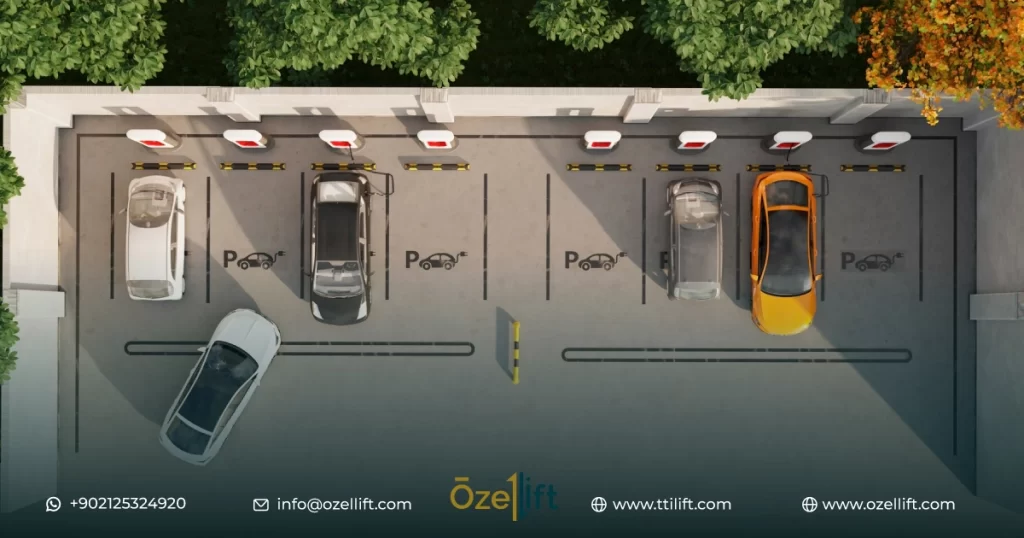Determining the standard elevator size is crucial for both residential and commercial building projects. The size of an elevator significantly impacts passenger capacity, accessibility, and overall building efficiency. Understanding the factors influencing size of elevator is essential for making informed decisions during the planning and construction phases.
This comprehensive guide will explore the various aspects of standard elevator size and provide valuable insights for building owners and developers.
What is the Standard Elevator Size?
Determining a single standard elevator size is challenging due to various factors. The size of an elevator often depends on its intended use, building type, and local regulations.
Residential elevators typically differ significantly in size compared to commercial or freight elevators.
While there are general guidelines, the ideal elevator size for a specific building requires careful consideration of passenger capacity, accessibility, and space availability.
Sources and related content
Standard Elevator size
The size of an elevator is far from standardized due to various factors influencing its dimensions.
From residential homes to commercial buildings, elevator size varies significantly, Please note that these are general guidelines, and actual sizes can vary significantly based on specific building requirements, local regulations, and other factors. Always consult with an elevator expert or engineer for accurate dimensions for your project.
Residential Elevators
- Size: Typically smaller due to limited space in homes.
- Dimensions: Can range from 3 feet by 4 feet to 4 feet by 5 feet. However, larger sizes are available for luxury homes.
- Capacity: Usually designed for a few passengers.
Commercial Elevators
- Size: Larger to accommodate more people and frequent use.
- Dimensions: Commonly range from 5 feet by 6 feet to 6 feet by 8 feet.
- Capacity: Varies based on building type and usage, but typically handles higher passenger loads.
Freight Elevators
- Size: Significantly larger to accommodate goods.
- Dimensions: Can vary widely depending on the type of cargo, but often exceed 6 feet by 6 feet.
- Capacity: Designed to handle heavy loads and oversized items.
Would you like to know more about elevator regulations or how to determine the right elevator size for a specific project? Contact us now.
Factors Affecting size of elevator
The dimensions of an elevator are influenced by several key factors:
Building Type and Usage
- Residential: Typically smaller elevators due to limited space.
- Commercial: Larger elevators to accommodate higher passenger traffic.
- Industrial/Freight: Significantly larger to handle heavy loads.
Number of Passengers
- High traffic: Larger elevators to handle peak passenger loads.
- Low traffic: Smaller elevators may suffice.
Accessibility Requirements
- Compliance with regulations: Elevators must adhere to accessibility standards.
- Specific dimensions: Required for wheelchair access and other needs.
Cargo Capacity
- Freight elevators: Size determined by the dimensions and weight of cargo.
- Passenger elevators: Also consider potential cargo, such as luggage or equipment.
Know more about
Observation Elevators
Hospital elevators
How to Determine the Right Elevator Size for Your Building
Choosing the correct elevator size is crucial for the efficient and safe operation of a building. Here’s a step-by-step guide:
1. Assess Building Characteristics:
- Building type and usage: Residential, commercial, industrial, or mixed-use.
- Number of floors: Determines elevator travel distance and speed.
- Building occupancy: Estimated number of people using the elevator.
- Cargo requirements: If the elevator needs to transport goods.
2. Calculate Passenger and Cargo Load:
- Passenger capacity: Determine the average number of people per trip and peak traffic times.
- Cargo weight: Consider the heaviest items that will be transported.
3. Consider Space Availability:
- Shaft size: Determine the available space for the elevator shaft.
- Car size: Choose a car size that fits within the shaft while providing adequate passenger or cargo space.
4. Evaluate Accessibility Needs:
- Compliance with regulations: Ensure the elevator meets accessibility standards for people with disabilities.
- Car size and door width: Choose dimensions that accommodate wheelchairs and other assistive devices.
5. Consult with Elevator Experts:
- Professional guidance: Seek advice from elevator engineers or contractors.
- Code compliance: Ensure the elevator meets local building codes and regulations.
- Cost estimation: Get quotes for different elevator options.
6. Consider Future Needs:
- Building expansion: Plan for potential future growth and increased elevator usage.
- Technology integration: Consider options for modern features like destination dispatch or energy efficiency.
Remember: Determining the right elevator size is a complex process that requires careful consideration of multiple factors. Consulting with professionals ensures that your elevator meets safety, efficiency, and accessibility standards.
Conclusion
Determining the optimal elevator size for your building is crucial for safety, efficiency, and user satisfaction. By carefully considering factors such as building type, passenger load, accessibility, and cargo requirements, you can make informed decisions.
Remember to adhere to local regulations and standards to ensure compliance and avoid potential issues. Consulting with elevator experts can provide valuable guidance throughout the process.
Need help determining the perfect elevator size for your project? Contact Ozellift today for expert advice and tailored solutions. Our team of professionals is ready to assist you in selecting the ideal elevator to meet your specific needs.
What is the standard elevator size?
There is no single standard elevator size. It varies based on building type, passenger capacity, and other factors.
What factors affect elevator size?
Building type, passenger capacity, accessibility requirements, and cargo capacity influence elevator size.
How can I determine the right elevator size for my building?
Assess building characteristics, calculate passenger and cargo load, consider space availability, evaluate accessibility needs, and consult with elevator experts.



